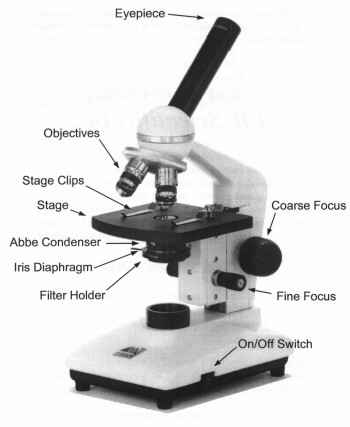You may change your mind as often as you wish. When you are satisfied with your
responses, click the SUBMIT button at the bottom of this page. Don't submit more
than once. (If you absolutely HAVE to
resubmit it, put a note on the end to that effect.)
A light source is located to the left of a lens. You can click-drag the lens to
any position. Find the focal length of the lens. Start
(Okay, if you really want it, here's some help)
 honors extra
honors extra
 Why is it that the highest magnification of an optical microscope (say, above 400x) is
done with an "oil immersion lens"? That is, a drop of oil is put on the
sample, and the microscope objective is submerged into the drop. Wouldn't
the oil have a higher index of refraction than air and reduce the magnification
of the lens? What physics is making the oil necessary?
The applet below may help.
Why is it that the highest magnification of an optical microscope (say, above 400x) is
done with an "oil immersion lens"? That is, a drop of oil is put on the
sample, and the microscope objective is submerged into the drop. Wouldn't
the oil have a higher index of refraction than air and reduce the magnification
of the lens? What physics is making the oil necessary?
The applet below may help.
The refractive index of the imaging medium is very important to the working numerical aperture of an objective.
This applet explores how changes in this refractive index value can affect how light rays are captured by the objective.
To operate the applet, move the slider to adjust the refractive index (N) of the imaging medium.
The six hypothetical light rays emanating from the specimen pass through the cover glass,
but only three are refracted into the objective at the lowest N value.
The other three are reflected back into the cover glass. As the N
(refractive index) value of the imaging medium is increased by moving the slider to the right,
successively more light rays are able to refract into the objective until at the
highest N value, all six rays enter the objective.
Below is a space for your thoughts, including general comments
about today's assignment (what seemed impossible, what reading didn't make
sense, what we should spend class time on, what was "cool", etc.):
You may change your mind as often as you wish. When you are satisfied with your responses,
click the SUBMIT button.
I received no help from anyone on this assignment.
